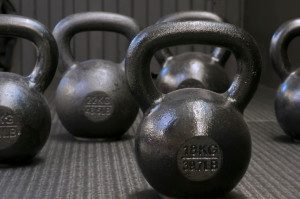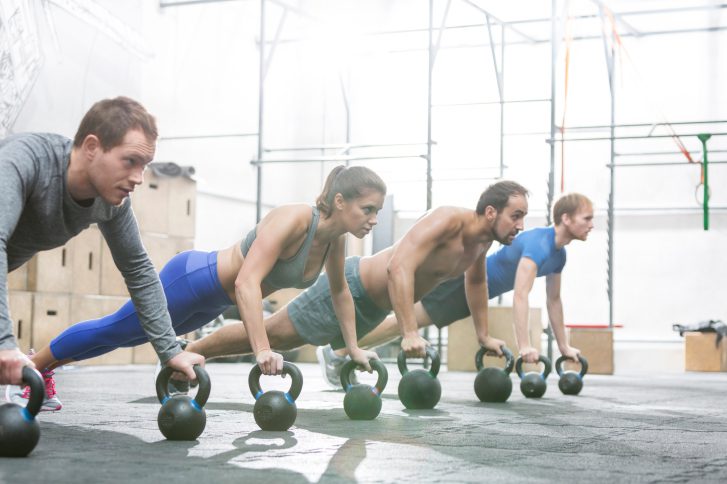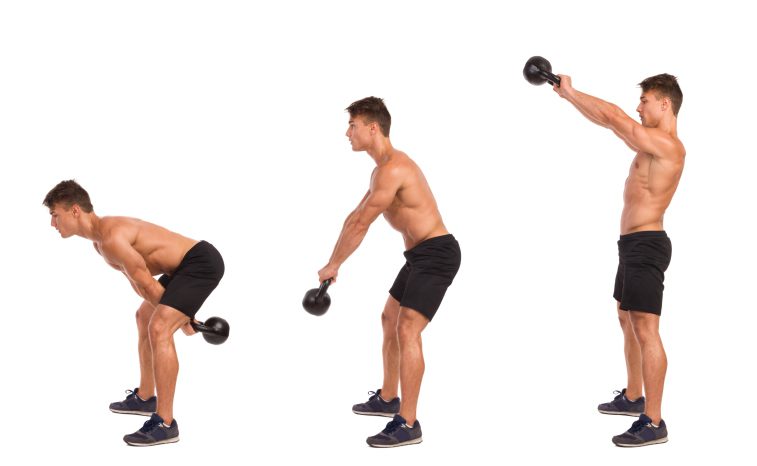Kettlebells for triathletes: An introduction

Bored with your regular strength program? Kettlebells are commonplace in most weight rooms, but many people don’t know how many different ways they can be used. There are dozens of workouts you can perform with a kettlebell ranging from training explosive power to improving muscular endurance. Many kettlebell workouts target specific muscle groups that triathletes should focus on in their cross-training. Kettlebells vary in weight, ranging from approximately 10 to 50 pounds.
When starting out, don’t go to heavy. Most of these workouts should be performed with higher reps and lower weight. Even for strength-building, if you start out too heavy too soon, you’ll definitely feel it the next day and not in a good way. Here are some guidelines for incorporating kettlebells into your workout routine.
How to use them
Use kettlebells during high-intensity interval (HIIT) training. Opt 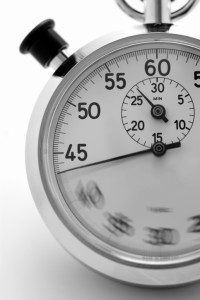 for a lighter weight and use a stop watch to measure workout and rest time. A good program to begin with is 50 seconds on, 10 seconds off for 10 to 15 minutes. Choose a kettlebell move and perform as many reps as possible during the work period without compromising form. You can switch up the exercises for each interval. This type of training will give your heart and lungs as good a workout as your muscles.
for a lighter weight and use a stop watch to measure workout and rest time. A good program to begin with is 50 seconds on, 10 seconds off for 10 to 15 minutes. Choose a kettlebell move and perform as many reps as possible during the work period without compromising form. You can switch up the exercises for each interval. This type of training will give your heart and lungs as good a workout as your muscles.
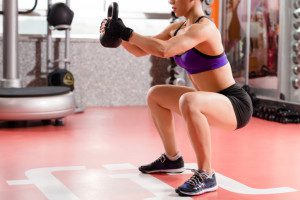 We’ve mentioned before how important it is for triathletes to strength train. To do so with a kettlebell, choose one on the heavier side and perform sets of reps. Squats and lunges are great workouts to do with a kettlebell and will provide pay-offs in running and cycling. You can also perform variations. Build arm strength to improve your swim stroke by holding the kettlebell overhead instead of close to your body. As you progress with the workouts, add weight by using two kettlebells instead of one. Classic Olympic lifts such as snatches and cleans (normally performed with a barbell) can also be done with a kettlebell. These are perfect for triathletes who want to lift weights but avoid building muscle mass.
We’ve mentioned before how important it is for triathletes to strength train. To do so with a kettlebell, choose one on the heavier side and perform sets of reps. Squats and lunges are great workouts to do with a kettlebell and will provide pay-offs in running and cycling. You can also perform variations. Build arm strength to improve your swim stroke by holding the kettlebell overhead instead of close to your body. As you progress with the workouts, add weight by using two kettlebells instead of one. Classic Olympic lifts such as snatches and cleans (normally performed with a barbell) can also be done with a kettlebell. These are perfect for triathletes who want to lift weights but avoid building muscle mass.
You can also use kettlebells with body-weight exercises such as push-ups. To increase the difficulty of the classic push-up, place two kettlebells shoulder-width apart and perform push-ups while gripping the upward-facing handles. This workout is great for developing overall upper body strength, which will improve your stroke efficiency in the water.
Kettlebell swings
The most popular kettlebell exercise is the swing, which provides a full-body workout and is great for HIIT training. Your core, quads, shoulders and hamstrings are just a few of the muscles that are targeted when performing this workout correctly. Stand hip-width apart and lower yourself into a slight squat. Gripping the kettlebell with both hands and with arms extended in front of you, use your leg power to come to a stand as you drive the kettlebell up. The kettlebell should come to your forehead when it reaches top position. When you descend into a squat again, the kettlebell will swing backward between your legs. Keep your core engaged and back straight. Repeats should be quick.
